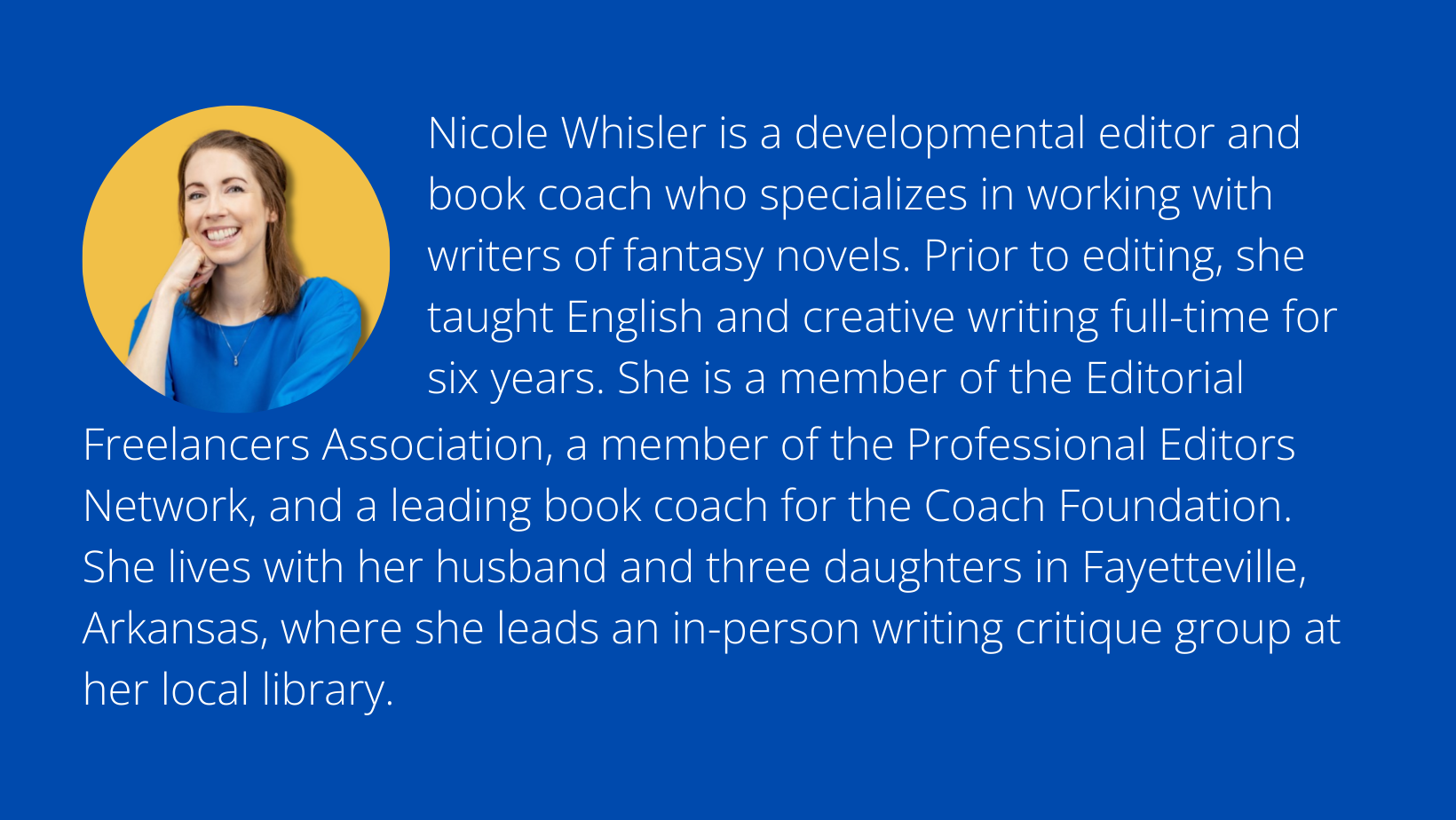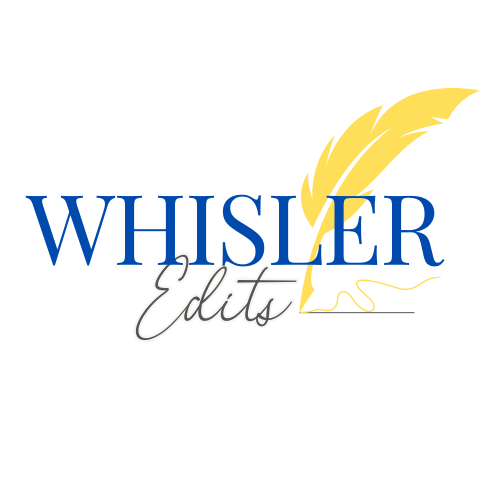Whisler Edits Blog

Outlining a Clear and Compelling Story Middle
Discover in this post …
the frustrations associated with the “murky middle” of a story.
an easy way to split your story’s middle into parts so you understand the function of each.
the components of an engaging story midsection.
Let's Stop Wasting Time
What’s the most difficult part of your novel to write—beginning, middle, or end? Are you more likely to rewrite your opening scene twenty times or to keep altering your ending until it’s just right?
If you’re like many writers, it’s not the beginning or the end that trips you up the most.
It’s the murky middle.
The middle section of your novel contains many of the items your readers have been waiting for. If you’re writing a romance, it’s where the romantic tension builds. If you’re writing an action/adventure story, it’s where your hero faces key moments of survival. And if you’re writing a mystery, it’s where readers get to unravel a series of clues along with your protagonist and try to guess the big reveal.
So what’s the problem with the middle if it’s so much fun?
Sometimes the problem is that your story looks one way in your head, but when you transfer it to the page, it comes out vastly different. You start to wonder why it appears so different—and if veering off in your own creative direction has made your story better or worse.

You lose some of your initial belief in yourself. Your confidence wanes. And before you know it, you put down your pencil—or stop opening your document—and question whether you should write something else altogether. Is this particular story really worth it?
Writers, I know the feeling.
I once removed 50,000 words from the middle of a novel I was writing.
Read that number again and tell me I don’t understand your pain.
That’s a lot of words! But I was writing in a direction that didn’t move my original story forward. I spent too much time on conversations between characters that didn’t matter. And while that section of my story was fun to write, I was happy to remove it. I breathed a sigh of relief because I knew deep down that it didn’t fit with my intentions for my characters and plot.
Rather than resigning yourself to removing thousands of words from your novel down the road, I recommend having a plan from the start—a plan that allows for some wiggle room but doesn’t allow you to change the trajectory of your entire story without realizing it.
Anyone can come up with a workable plan for their novel, of course, but two of my favorite methods come from Story Grid by Shawn Coyne and Save the Cat! Writes a Novel by Jessica Brody.
Let’s take a look at the overall pattern Jessica Brody proposes to keep your novel’s middle focused and structured—and altogether a better experience for both the writer and the reader.
*Disclaimer: One of the perks of being a writer is that you’re your own boss, and you get to choose whatever works best for you to keep your story moving. I’m simply sharing what has worked well for both me and my clients over the years. And if you’re concerned at first that this approach seems formulaic or predictable, don’t worry—these are simply patterns that will help you understand how to satisfy overall reader expectations. The creative way you fulfill those expectations is entirely up to you!
Split That Novel
As I mentioned, one of the reasons writers tend to struggle toward the middle of their novels is that it gets so … murky.
It’s easy to lose sight of your original storyline, and it’s common to feel overwhelmed and antsy at this stage. So let’s start by getting organized.
First, split your novel into three parts in your mind: beginning, middle, and end.
Let’s call the first 20% of your novel Act 1. The second part of your novel, which makes up the next 60% or so, is Act 2. And the third and final part, which consists of the last 20% of your novel, is Act 3.
In more visual terms, your story now looks like this:

These percentages are estimates, by the way, meant to keep you on track but not to confine you. Shifting the percentages slightly makes no real difference—but you wouldn’t want to read an epic fantasy novel with a rushed ending that takes up only 2% of the full story, would you?
Now that you've divided your novel into three main sections, let’s split the middle 60% of your novel (Act 2) into halves. So your novel now contains four parts, like this:

In my experience, it’s helpful to split the full middle section of your novel into halves because each half fulfills a different purpose. My outline makes more sense in my mind if I have a clear understanding of those roles.
What exactly are those roles?
Let’s explore them.
Your Story's Middle, Part 1
The first half of your middle delivers on the premise of your novel. Jessica Brody calls it the “promise of the premise”—in other words, the reason a reader picked up your book in the first place. In this section, your protagonist will attempt to reach their outward goal, but they’ll go about it in the wrong way. After all, the story would be over if your character accomplished their goal too soon! They would also miss out on some essential character growth.
Quick distinction: It’s fun for readers to watch your protagonist make decisions and move the story forward in the first section of your story’s middle, but it won’t necessarily be fun for your protagonist. Your main character might be enjoying this new world, but it’s just as likely that they’ll be floundering.
Also, although they’ll experience both ups and downs during this part of the story, your protagonist will either be getting closer to reaching their goal and succeeding on their “mission," or they’ll be moving farther and farther from their goal.
If your protagonist is generally on an upward path and getting closer to their goal, picture the first half of your story's middle like this:

On the other hand, if your protagonist is generally on a downward path, moving farther from their goal, picture it like this:

Either way, loving the new world or hating it, succeeding or failing, your protagonist will eventually arrive at the approximate middle of the story. Let’s discuss the role it serves.
Your Story's Midpoint
The first half of your story’s middle will culminate in your story’s Midpoint, which represents the middle of your protagonist’s transformative character arc. (It doesn’t need to be at the exact 50% mark—I’ve been asked this multiple times, and my answer is always to use this percentage as a guide, not a rule.)
The Midpoint is pivotal to your story, so let’s discuss its three main functions:
Your midpoint should push your protagonist into a false victory or false defeat.
Your midpoint should raise the global stakes of your novel.
Your midpoint should allow the A & B stories to intersect.
Let’s examine these items in order.
1 - FALSE VICTORY OR FALSE DEFEAT
If your protagonist is on an upward trajectory leading to the Midpoint, their path will culminate in a false victory, a moment in which they “win” in a major way. Why is it a false victory? Because the story isn’t over yet. Your protagonist still has a journey ahead of them, and they still have lessons to learn.
Conversely, if your protagonist is on a downward trajectory leading to the Midpoint, their path will culminate in a false defeat (a moment in which they “lose” in a major way). Why is it a false defeat? For the same reasons as listed above: the story’s not over and your protagonist still has something to learn!
2 - RAISING OF GLOBAL STAKES
The second item your Midpoint should accomplish is to raise the stakes on a global level. This might occur through a major plot twist, a ticking time bomb, a successful (or humiliating) incident at a public event, a declaration of love, or any number of ways. Your protagonist will suddenly face a new course of action, a new truth, or new consequences. They’ll need to hunker down and “get serious,” as Jessica Brody puts it.
3 - INTERSECTION OF A & B STORIES
The last function of your story’s Midpoint is to allow the A Story to intersect with the B Story, which might sound complex but is fairly straightforward once we define these terms.
The A Story of your novel refers to the external story, the part where your character attempts to reach their outward goal:
Save their family.
Become a member of the highest order of society.
Get revenge on the villain.
Solve the crime.
Win over their love interest.
You get the idea.
The B Story represents the internal story, the part where your character grows and changes in necessary ways so that they (usually but not always) develop the skills, mindset, or perspective needed to reach their outward goal. It’s the learning that takes place, the internal transformation. Examples of such change include the following:
Selfish to selfless
Prejudiced to open-minded
Insecure to confident
Codependent to independent
Greedy to generous
In the section of your story’s middle leading up to the Midpoint, your protagonist has been focusing on what they want (the A Story) rather than on what they need (the B Story). The intersection of the A and B Stories simply means that because of the Midpoint, your protagonist will stop concentrating only on what they want and will start figuring out what they truly need.
They’ll realize that what they’ve been doing all along hasn’t been working. Something is still missing, whether they experienced a false victory or a false defeat. Often, the B Story character (the character you’ve chosen to help your protagonist learn their theme) will cross paths with your protagonist at this point, subtly indicating to readers the shift from wants to needs.
Now you know the purpose of your story’s Midpoint: to push your protagonist along on their journey and to make it difficult, often impossible, for them to return to their past world. They’re fully immersed with a stronger understanding of the consequences of their actions at this point.
What’s next?
Your Story's Middle, Part 2
Up to now, we’ve discussed the first half of the middle section of your novel, along with the Midpoint itself. Keep in mind that the full picture of your middle (both halves put together—in other words, the full Act 2 world) will look either like this ...

Or like this:

Let’s discuss the elements on the right side of the Midpoint, the second half of your story’s middle.
During the second half of the middle, your protagonist will be attacked by both external and internal demons. Plans will go awry, villains will close in, and in many cases, something terrible will happen to your protagonist that makes them question the worth of their original goal and their ability to achieve it.
If your protagonist was on an upward path in the first part of the middle (getting closer and closer to reaching their goal, culminating in a false victory), this second section will represent a downward path. And vice versa—if the first section of the middle was a downward path (getting farther and farther from reaching their goal, culminating in a false defeat), this second section will represent an upward path. Your protagonist will still experience ups and downs, just like in the first half of the middle, but there should be a noticeable overall trajectory.
Then, around 75% of the way through your novel, your protagonist will hit rock bottom. Jessica Brody calls it the All Is Lost moment. A mentor might die, leaving your protagonist alone. A major plot twist might rock your character’s world. Someone might betray your hero, or your hero might fail epically at a crucial moment.
The All Is Lost needs to be a BIG moment in your story—even bigger than your global inciting incident, which set your story into motion in the first place. Your protagonist will now appear worse off than they did at your story’s start.
After the All Is Lost occurs, your protagonist will feel as if they can no longer achieve their goal. It should seem impossible to both them and your readers. They’ve been knocked down, and there’s strong uncertainty as to whether they’ll ever get back up again.
So they’ll wallow for a bit, reflecting on their situation. They might give in to their anger, go into denial, or react in some other way that fits their character. And while they’re wallowing and reacting, something deep inside them is working, processing, whether they realize it or not.
Then something will “click” within them. Something will fall into place—a final clue they were missing, a revelation they never understood until that moment. They’ll have an epiphany. Reach a conclusion. Soon they’ll make a choice that leads directly into Act 3.
But, because today’s topic is all about the middle section of your story rather than the end, I’ll save Act 3 (the final 20% of your novel) for another day.
Summing Up
Now that you’ve read through this post, check your notes against the following to make sure you’ve absorbed the main points:
Keeping your novel’s middle section structured is a solid way to stay on track with the direction of your story and satisfy reader expectations.
Split your novel into four parts to keep it organized in your mind and make it easier for you to understand the distinct role each part will fulfill:

The first half of your middle delivers on the premise of your novel. Your protagonist will attempt to reach their outward goal, but they’ll go about it in the wrong way.
The first half of the middle will represent either an upward or downward path for your protagonist and will end at the Midpoint. The second half of the middle will reflect the opposite path.
The Midpoint includes three essential items: 1) your protagonist will undergo a false victory or false defeat, 2) the global stakes will be raised, and 3) your A Story and B Story will intersect.
During the second half of your story’s middle, your protagonist will be attacked by internal and external demons. They’ll experience an All Is Lost moment that makes their goal seem insurmountable, and after some time, they’ll have an epiphany that will move them forward in their character arc and forward in the story.
For specific examples that correspond with this post, I recommend you check out Save the Cat! Writes a Novel by Jessica Brody. It’s an enlightening read!
Did you measure your story’s middle against the tips provided in this post? What did you learn about your story? Does the info above shed light on anything your outline might be missing? Do you agree or disagree with structuring your story's middle in this way? I’d love for you to email me and let me know at [email protected]. Happy writing and here’s to no more murky middles!
Do you want to learn how to write a story that makes your target readers stand up and cheer? If you’d like support from A to Z (from brainstorming to drafting to revising to publication), book a Discovery Call with me to see if you’re a good fit to join my book coaching program, Fantasy Footsteps: Road to Publication. And if you haven’t done so already, grab your Free Guide on how to hook readers from your story’s start!

